The majority of mainstream mindfulness courses on offer today have their roots in Mindfulness Based Stress Reduction (MBSR), which was developed by Jon Kabat-Zinn in 1979. It was initially developed to help people to manage stress and chronic health conditions. Jon Kabat-Zinn created MBSR to capture and embody key Buddhist teachings and to put the Buddha’s teachings into practice, making them accessible in mainstream settings so that more people could benefit.
The Mindfulness Association’s Mindfulness Based Living Course (MBLC) was developed in 2010 as a mindfulness course for everyone. Although, it draws on the structure and includes some practices from MBSR, it was inspired by the meditation teachings of Rob Nairn. Rob Nairn is a founder of the Mindfulness Association and is a Tibetan Buddhist who practised and taught in the Kagyu lineage of Tibetan Buddhism for over forty years. His skill was in translating complex and subtle Buddhist teachings about the mind and how to train it, into Western psychological language in order to make it more accessible.
The MBLC course has more of an explicit focus on self-compassion and presents an observer undercurrent model of mind. It includes meditation practices relating to each of these topics, as well as the RAIN acceptance practice, which are missing from MBSR.
All mainstream mindfulness training is based on the first teaching of the Buddha: the four noble truths.
The first truth is the truth of suffering, that life is impermanent, imperfect and involves dissatisfaction. The second truth is the origin of suffering, which is our resistance to how life is, driven by a desire to get what we want and avoid what we don’t want. The third truth is the end of suffering, which calls us to let go of our resistance to how life is and let go of our desire and avoidance. The fourth truth is that there is a way to end suffering by following the noble eightfold path, a path for overcoming greed, hatred and delusion.
In our mindful practice we learn to face our suffering with honesty and acceptance so that we can familiarise ourselves with the ways in which we resist the inevitable flow of life and thereby increase our suffering. We see how our resistance to the inevitable pain of life, increases that pain from 10% to 100%. When we begin to understand that the 90% is optional, we let go of this resistance, to live wholeheartedly with the 10% inevitable pain of life. In this way we find a path of freedom and peace, even in the midst of pain and difficulty.
In addition, all mainstream mindfulness training include teaching and practices based on the Buddha’s teachings on the four foundations of mindfulness.
The first is mindfulness of the body, which is explored through practices such as the bodyscan and mindfulness in movement.
The second is mindfulness of feelings, which fall into three categories of pleasant, unpleasant and neutral. This is explored through recognising our preferences and attitude to whatever is arising in our experience and cultivating an attitude of ‘without preference’ or equanimity.
The third is mindfulness of mind, where we come to recognise that thoughts and mind states arise of their own accord, display in the mind for a while and then dissolve. This is explored through the observer undercurrent model of mind in which we recognise that we are not our thoughts and that we do not have to identify ourselves with the thoughts or mind states.
The fourth is mindfulness of the Dharma (the Buddha’s teachings) or the truth. Indeed, it is astonishing the extent to which the teachings of the Buddha accord with the latest theories in psychology, neuroscience, physics and meta-physics, in relation to the mind and to the universe. Through our experience of the mind in meditation practice we come to recognise how things really are, including our sense of self. When we recognise how our reality is not solid, is ever changing and is dependent on myriad causes and conditions which are way beyond our control, we get a taste of freedom.
An understanding of the Buddhist roots of mindfulness, through teaching and meditation practice, can enrich and deepen our mindfulness practice.
If you would like to explore this further, then please click the link for information about our upcoming weekend course and 5 day retreat The Buddhist Roots of Mindfulness at Samye Ling Tibetan Centre in Scotland.
__________________________________________________________________________
Heather Regan-Addis is a Founder Member and director of the Mindfulness Association.
Heather delivers training for the Mindfulness Association on our two Post Graduate Master’s degree courses as well as on our regular courses in Mindfulness, Compassion, Insight and on our Teacher training programmes.


